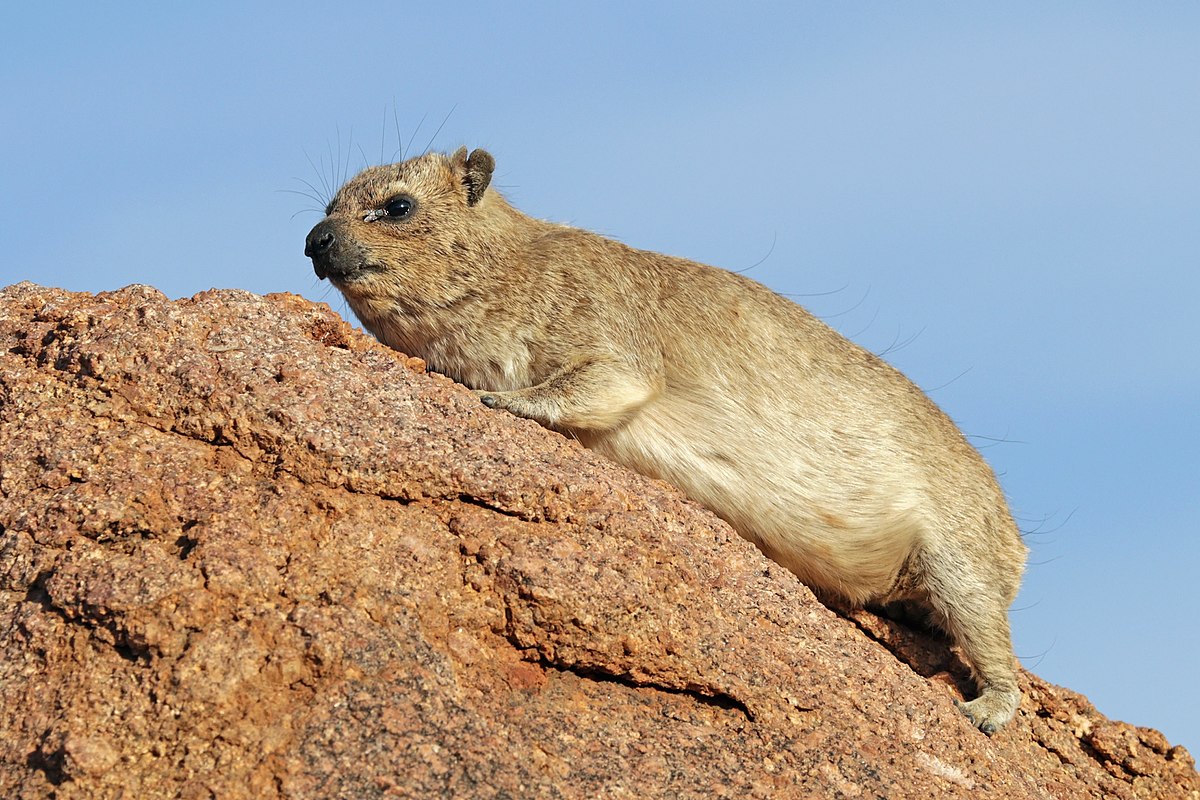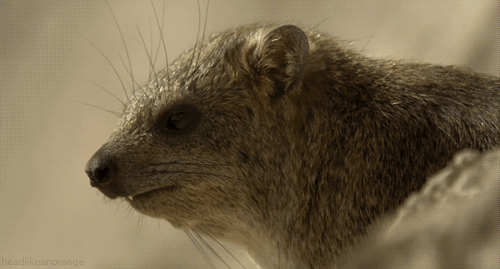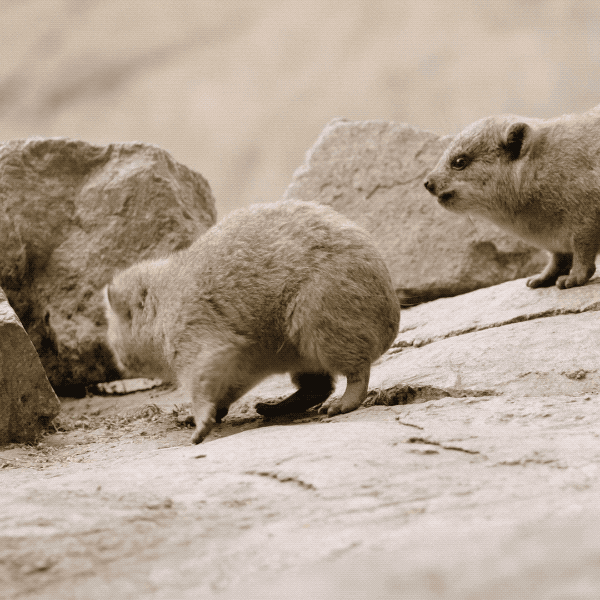Hyrax
Species: Capensis
Phylum: Chordata
Class: Mammalia
Kingdom: Animalia
Order: Hyracoidea
Genus: Procavia
-
Rock Hyraxes spend a lot of time sun-bathing. The rock hyrax spends about 95 percent of its time resting. This can involve heaping, in which animals pile on top of each other inside a den, or basking in the sun. Both behaviors are compensations for the hyrax's poorly developed thermoregulation. They tend to stay in their burrows until the sun is high in the morning and may not leave their dens at all on cold, rainy days.
-
They have multi-chambered stomachs. Although they are not ruminants, hyraxes have three-chambered stomachs filled with symbiotic bacteria that help break down the plants they eat. Baby hyraxes are not born with the bacteria they will need to digest plant matter, so to obtain it they eat the poop of adult hyraxes.
-
They have tusks. The rock hyrax has a pair of long, pointed tusk-like incisors. Males have larger and sharper tusks than females.
-
They're related to elephants and manatees. Modern hyraxes are members of the Procaviidae family, the only living family within the Hyracoidea. During the Eocene era, hyraxes of all sizes filled the plains of Africa: from a mouse-sized species to one the size of a small horse. Competition from bovids during the Miocene displaced these ancient hyraxes. While some evolved into the hyraxes we know today, others appear to have given rise to the elephant and sirenian (manatees and dugongs) families.
-
Rock hyraxes have padded, sweaty feet. Rock hyrax feet have black, rubbery pads that are moistened by numerous sweat glands. The pads lift up in the center for a suction cup-like effect that helps them keep their grip on rocky surfaces.
-
They have a smelly gland on their backs for communication and territorial marking. The hyrax's dorsal gland may be surrounded by black, yellow, or orange hairs and secretes an odor they use to mark rocks. The gland is most visible in the dominant male and pheromone production from the gland is most intense during the breeding season.
-
They have a special claw for grooming. Hyrax toes have rounded, hoof-like nails, except the inside rear toe, which has a long nail called a grooming claw. The grooming claw is used to pick through hair and scratch itchy spots.
-
Rock hyrax songs are complex and use syntax. Rock hyraxes have at least 21 different vocalizations, including trills, yips, grunts, wails, snorts, twitters, shrieks, growls, and whistles. Males also sing complex songs that can last for several minutes and serve a territorial purpose, like bird song. When researchers looked at how males put together different syllables (wails, chucks, snorts, squeaks, and tweets) to compose a song, they found the order of the syllables was significant; that is, hyrax songs make use of syntax, the manner in which different elements are combined. They also found hyraxes from different regions used different local dialects in their songs.





